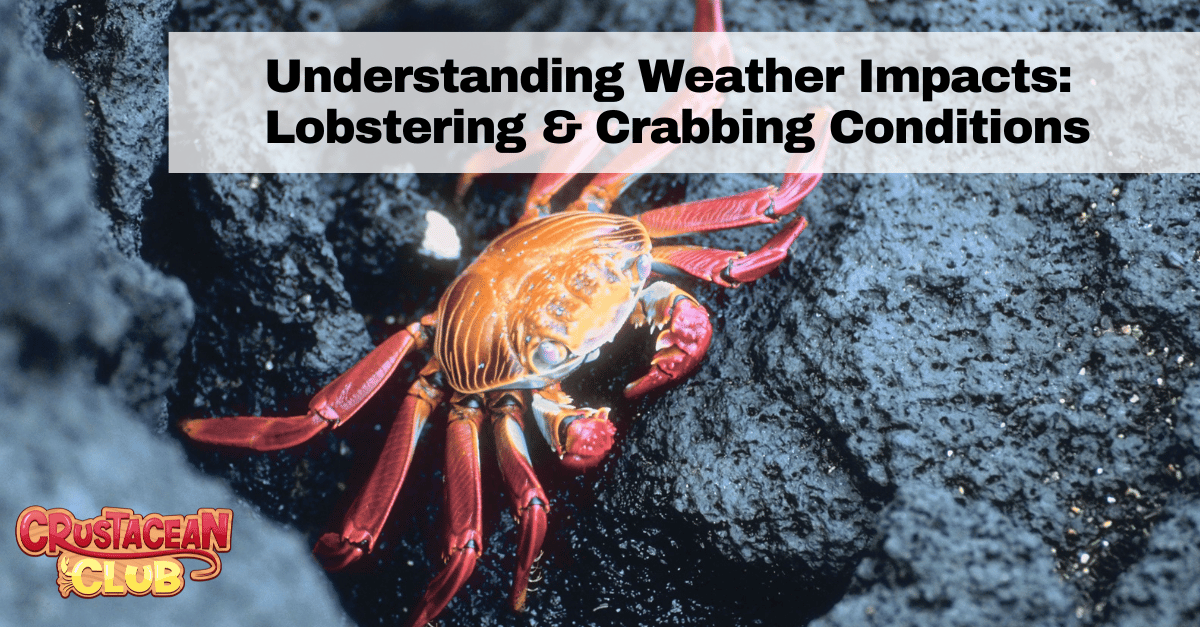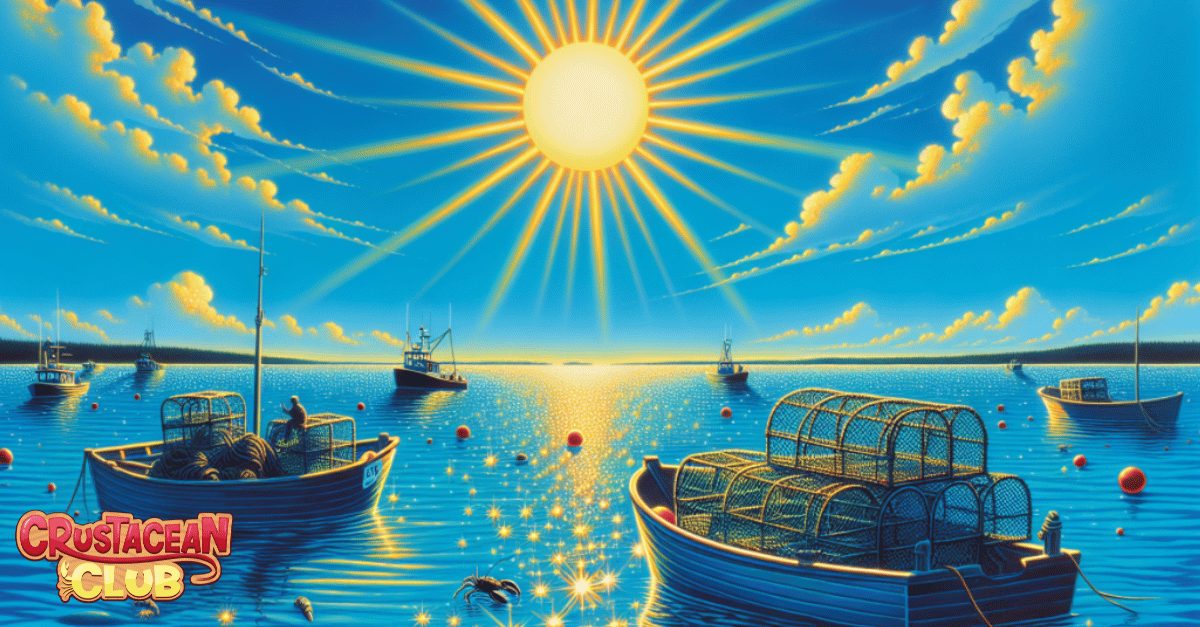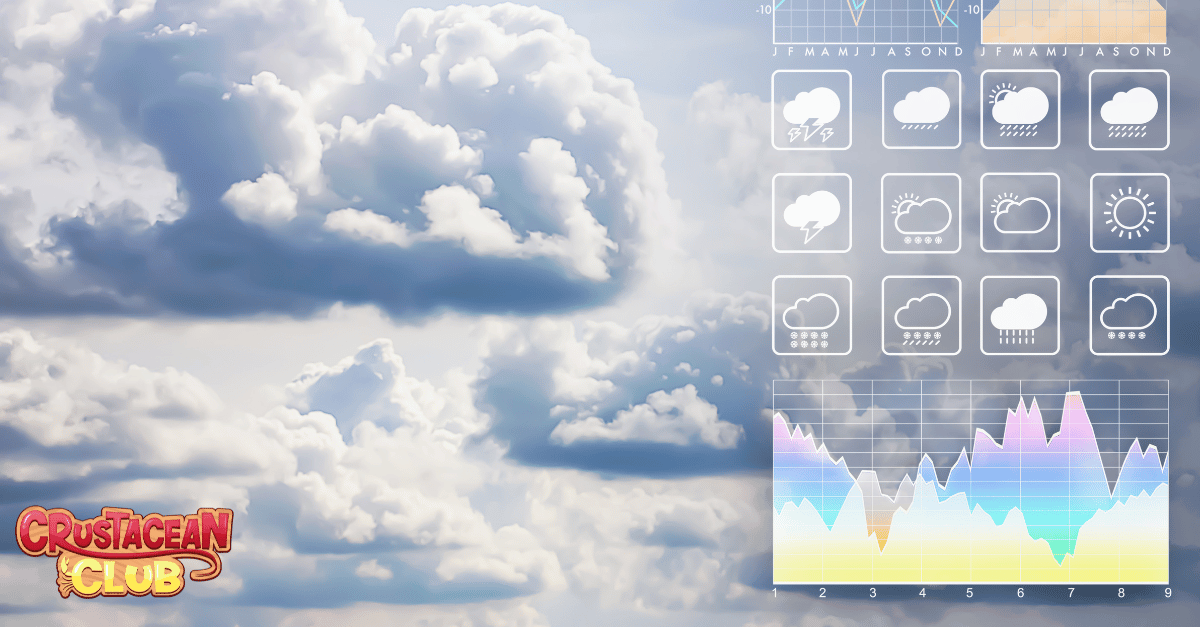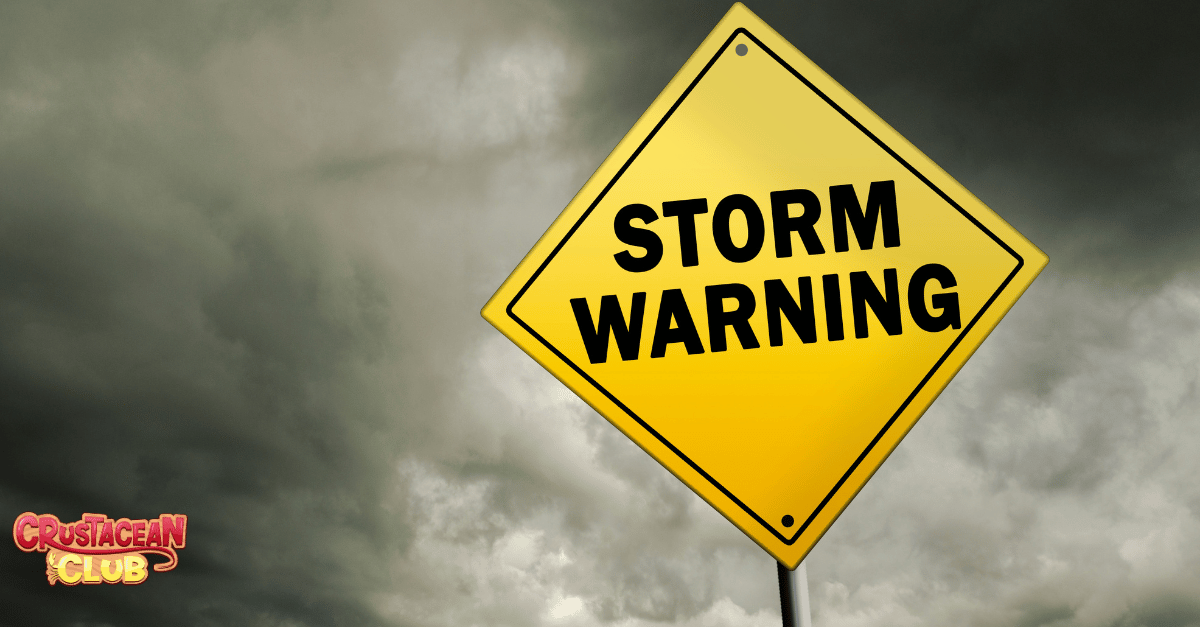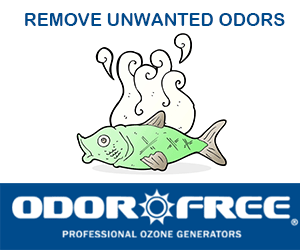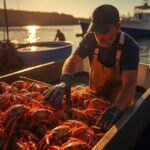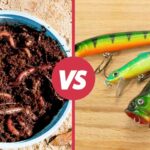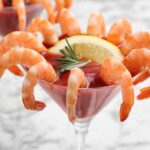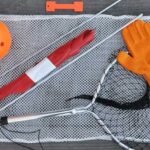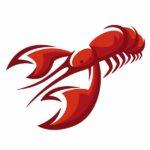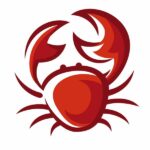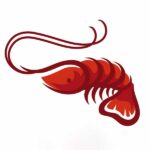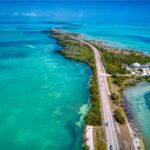Understanding Weather Impacts: Lobstering & Crabbing Conditions
When it comes to lobstering and crabbing, weather impacts can either make or break the catch of the day. But what weather conditions are critical for a prosperous outing at sea, and when does the weather signal it’s time to stay docked? This article dives into the intricate relationship between Florida’s weather and the success of its lobstering and crabbing industries, providing insight into how to read and respond to the skies for the best results.
For more information on all things crustacean, be sure to check out the Crustacean Club site!
Key Takeaways
- Florida’s weather is crucial for industries like lobstering and crabbing since it can change quickly and impact daily activities.
- Ideal fishing conditions hinge on a combination of warm sun, gentle winds, and clear water, and understanding weather patterns is key to planning successful outings.
- Severe weather, including high winds and hurricanes, can significantly disrupt fishing activities and cause long-term damage to the industry and ecosystems.
Introduction
Imagine a time when Florida’s skies could change as swiftly as the tides, throwing a wrench in the best-laid plans of pilots and farmers alike. It’s no surprise, then, that Florida’s history is steeped in the need for a keen eye on the weather. From the early days, when the Weather Bureau took root within the Department of Agriculture back in 1890, Florida acknowledged the crucial role of organized weather reporting. These services have become the backbone of many industries, with aviation relying on accurate forecasts since the Air Commerce Act of 1926 entrusted the Weather Bureau with the colossal task of monitoring the skies for civilian flights.
As the sun rises and sets, from the hot mornings to the muggy evenings, Florida’s weather is a tapestry of conditions that can flip from calm to tempestuous in the blink of an eye. It’s a land where afternoon showers are as common as the oranges dotting the landscape, and where the heat of a south Florida day can reach sizzling highs. In such a dynamic location, having an updated weather service is not just a luxury; it’s an indispensable part of life, guiding decisions that affect livelihoods every single evening.
Ideal Fishing Conditions
As we turn our gaze towards the open waters, let’s consider what constitutes an ideal day for those who ply the trade of lobstering and crabbing. Florida weather, with its balmy temperatures and gentle breezes, can be as alluring as it is deceiving. The perfect fishing day is a delicate blend of factors, where the sun’s warmth, the wind’s caress, and the water’s clarity all align to create conditions ripe for a successful harvest.
Reading the Weather
Now, imagine you’re at the helm of a fishing vessel, with the salt air tangling your hair and the horizon stretching out before you. To navigate this vast blue expanse, you must become a reader of the skies. Florida weather forecasts are your roadmap, where rain and thunderstorms hold sway over your plans.
Understanding how precipitation affects river fishing is crucial; a deluge might mean swollen rivers and treacherous routes, while a light drizzle can stir up the surface, enticing crabs and lobsters out of their hiding spots.
Weather’s Role in Lobstering & Crabbing
The dance with the weather continues as we delve into how it directly influences the behavior of our clawed quarry. When the ocean warms, lobsters embark on a migration to deeper, colder waters, altering not just their location but also their life cycles.
The delicate process of molting, essential to their growth, can shift with the temperature, making them vulnerable to disease and affecting their development from larvae to adulthood.
Signs You Should Sit This Trip Out
As with any high-stakes gamble with nature, knowing when to fold is just as important as knowing when to play. There are telltale signs in the weather forecast that should make any seasoned lobsterman or crabber pause and consider staying ashore. Some of these signs include:
- High winds
- Heavy rain
- Thunderstorms
- Rough seas
- Storm surge
It’s important to prioritize safety and make informed decisions when it comes to venturing out to sea.
Heavy rain, for instance, can dampen the spirits of fish and fishermen alike, signaling a day better spent repairing gear than casting it.
Disruptions to Fishing
But what happens when the weather turns from a fickle friend to a formidable foe? In Florida, extreme weather events like hurricanes can wreak havoc on the lobstering and crabbing industry, scattering traps and threatening the livelihoods of those who depend on the sea. The aftermath of such storms can be just as challenging, with fishermen navigating damaged infrastructure and the economic toll of weeks without work.
Weather Influences on Wildlife and Ecosystems
The effects of weather and climate extend beyond the immediate concerns of the fishing industry, touching every corner of Florida’s diverse ecosystems. Some examples include:
- The Everglades, which rely on a delicate balance of water levels and temperatures
- Coral reefs, which are highly sensitive to changes in water temperature and acidity
- The myriad species that call these places home, which depend on specific climate conditions for survival
These ecosystems are all sensitive to the slightest shifts in temperature and precipitation.
As the climate changes, so too do the habitats and behaviors of wildlife, leading to a complex web of consequences that ripple through the food chain.
Summary
As we cast our final lines and reel in our thoughts, it’s clear that weather plays a pivotal role in the delicate balance of lobstering and crabbing. From the historical roots of Florida’s weather services to the modern-day challenges posed by climate change, understanding the impact of the elements is crucial for those who harvest the sea’s bounty. The take-home message is one of respect for nature’s power and the need for vigilance in the face of an ever-changing environment.
Frequently Asked Questions
Why is understanding Florida’s weather patterns important for lobstering and crabbing?
Understanding Florida’s weather patterns is crucial for successful lobstering and crabbing because it helps determine the best fishing times, ensures safety on the water, and influences marine life behavior. This, in turn, affects the success of these activities.
What are the ideal weather conditions for a successful fishing trip?
The ideal weather conditions for a successful fishing trip include moderate temperatures, calm winds, and clear water. These factors contribute to better chances of locating seafood and safely managing fishing equipment.
How can weather forecasts affect my decision to go fishing?
Weather forecasts can help you make safe decisions when planning a fishing trip. It’s important to avoid fishing in dangerous conditions like heavy rain, strong winds, or approaching storms. Stay safe out there!
What are some consequences of extreme weather events on fishing?
Extreme weather events like hurricanes can devastate fishing equipment, disrupt marine ecosystems, and cause economic losses for fishermen through operational disruptions and infrastructure damage. This can have long-lasting impacts on the fishing industry.
How does climate change impact wildlife and ecosystems in Florida?
Climate change in Florida impacts wildlife and ecosystems by causing habitat loss, changes in species distribution and behavior, and challenges in maintaining life cycles, which ultimately affects the availability and diversity of species for fishing. So, it’s important to consider the broader impact of climate change on ecosystems.

